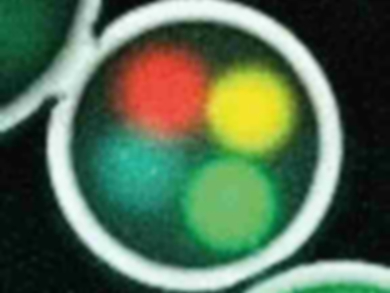To mimic the organization of cells in living organisms with artificial cellular systems, methods for compartmentalization, communication, and transport between the compartments are required. In the absence of metabolism and membrane transport mechanisms, it is difficult to operate membrane-encapsulated systems for extended periods of time and to exchange molecules between them. One solution to these issues is building membrane-free reaction compartments from porous hydrogels.
Lukas Aufinger and Friedrich C. Simmel, Technical University Munich, Garching, Germany, have developed a protocol to generate gel-based artificial organelles using click chemistry and droplet microfluidics. The organelles consist of agarose hydrogel beads. They are functionalized with DNA molecules which either act as genetic templates or which are able to capture diffusing RNA molecules. To mimic artificial cells, the organelles were encapsulated within emulsion droplets containing a cell-free gene expression system (pictured).
In one experiment, one type of organelle was used to generate mRNA molecules coding for a fluorescent protein, whose translation was inhibited in the absence of certain trigger DNA molecules. The translation of the protein was only activated when the RNA containing the trigger diffused into organelles. Using such artificial gel-based organelles, the scientists separated genetic transcription and translation processes. This process is similar to those in eukaryotic cells, where these processes take place in the nucleus and cytosol, respectively.
The developed artificial organelles can be thought of as functional modules which can be used to build complex cell-free synthetic biological systems, whose behavior is programmed by the composition of the organelle mixture. Due to the fact that the organelles are not confined by membranes, they can be operated for extended periods of time—they can be continuously supplied with reactants and waste products can be flushed out.
- Artificial Gel-Based Organelles for Spatial Organization of Cell-Free Gene Expression Reactions,
Lukas Aufinger, Friedrich C. Simmel,
Angew. Chem. Int. Ed. 2018.
https://doi.org/10.1002/anie.201809374




